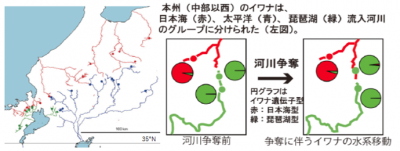2023-01-05 ペンシルベニア州立大学(PennState)
ペンシルベニア州立大学の研究チームは、ヘパリンとタンパク質断片であるペプチドを組み合わせることで、薬の放出を遅くし、血栓のある場所に直接薬を運ぶことを可能にした。研究成果は、学術誌「Small」に掲載された。
混合すると、正電荷のペプチドと負電荷のヘパリンが結合して、ナノ粒状ペーストを作り、皮下に注入して、キャッシュを形成し、循環系で拡散して、血栓が現れたら、そこに移動することができます。血栓の近くで液体が乱流になると、2つの物質が分離し、ヘパリンが抗凝固作用を発揮するようになる。
結合剤を加えなければ、ヘパリンは、血栓部位だけでなく、無差別に抗凝固作用を発揮し、半減期が60〜90分と短く、すぐに消失してしまいます。前臨床動物試験において、ペプチドを添加することにより、ヘパリンの半減期を24時間近くまで飛躍的に延ばすことができることが判明しました。
<関連情報>
- https://www.psu.edu/news/engineering/story/controlled-localized-delivery-blood-thinner-may-improve-blood-clot-treatment/
- https://onlinelibrary.wiley.com/doi/10.1002/smll.202203751
ヘパリンペプチドのナノグラニュールによる血栓症対応型抗凝固療法の開発 Heparin-Peptide Nanogranules for Thrombosis-Actuated Anticoagulation
Atip Lawanprasert, Sopida Pimcharoen, Sarah E. Sumner, Connor T. Watson, Keefe B. Manning, Girish S. Kirimanjeswara, Scott H. Medina
Small Published: 03 October 2022
DOI:https://doi.org/10.1002/smll.202203751
Abstract
Despite nearly a century of clinical use as a blood thinner, heparin’s rapid serum clearance and potential to induce severe bleeding events continue to urge the development of more effective controlled delivery strategies. Subcutaneous depots that steadily release the anticoagulant into circulation represent a promising approach to reducing overdose frequency, sustaining therapeutic concentrations of heparin in plasma, and prolonging anticoagulant activity in a safe and effective manner. Subcutaneously deliverable heparin-peptide nanogranules that allow for long-lasting heparin bioavailability in the circulatory system, while enabling on-demand activation of heparin’s anticoagulant effects in the thrombus microenvironment, are reported. Biophysical studies demonstrate this responsive behavior is due to the sequestration of heparin within self-assembling peptide nanofibrils and its mechanically actuated decoupling to elicit antithrombotic effects at the clotting site. In vivo studies show these unique properties converge to allow subcutaneous nanogranule depots to extend heparin serum concentrations for an order of magnitude longer than standard dosing regimens while enabling prolonged and controlled anticoagulant activity. This biohybrid delivery system demonstrates a potentially scalable platform for the development of safer, easier to administer, and more effective antithrombotic nanotechnologies.



